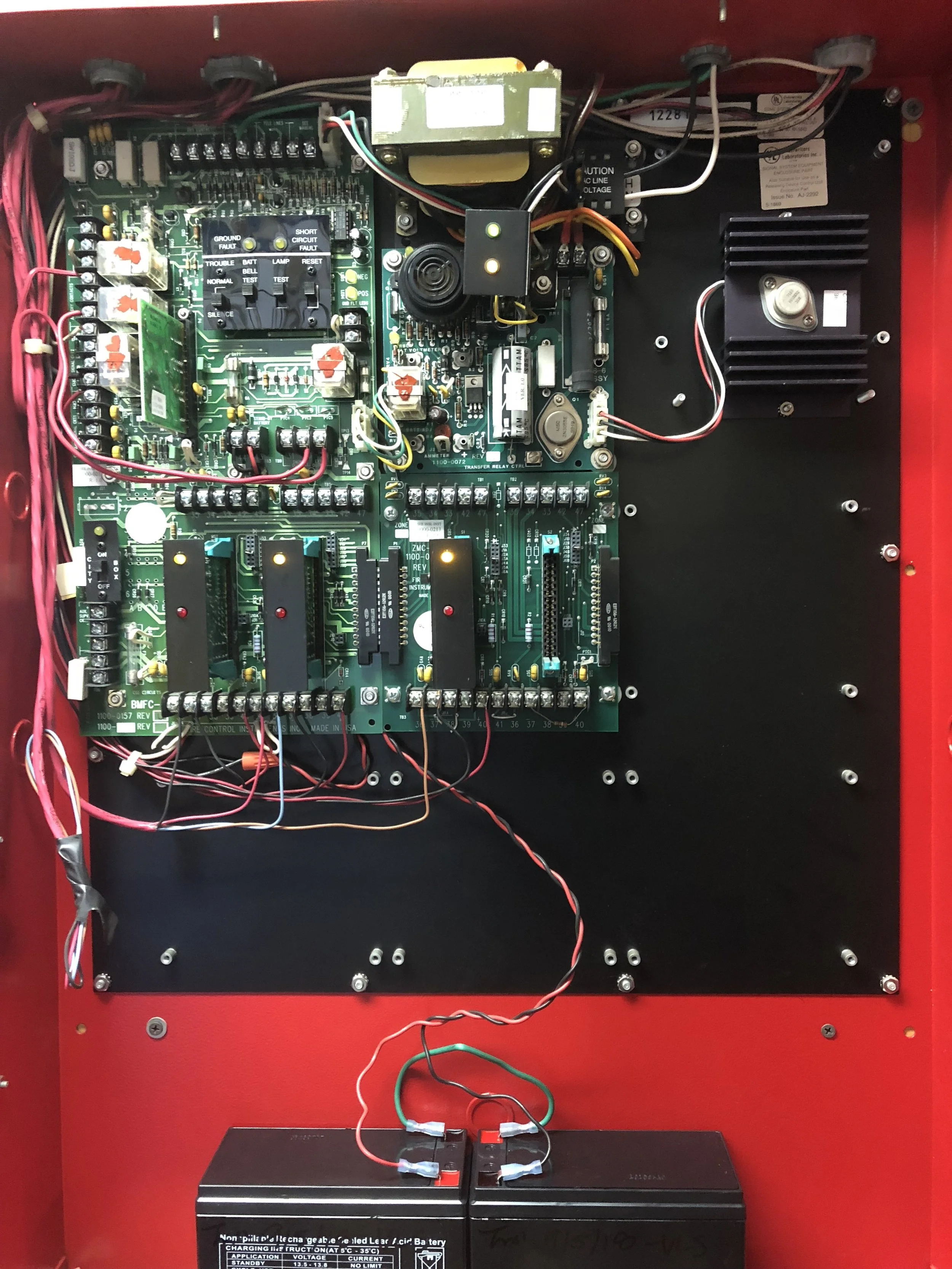Contact Vermont Life Safety’s Office (802) 434 5335, info@vermontlifesafety, or in the contact form below. We will be happy to assist you with any service related issues. If necessary we will send one of our technicians to service your equipment. Below are frequently asked questions related to fire alarm systems, fire sprinkler systems, extinguishers, and suppression systems.
+ Should I replace or upgrade my fire alarm system?
There are significant differences betweeen "upgrading" and "replacing your fire alarm system. There are generally different requirments regarding a replacment vs an upgrade of an existing fire alarm system, including the degree to which the requirments for building construction must be met. When replacing your fire alarm system, local code requirments for existing building may allow a device-for-device replacement without making any changes to the functionality of the current system. A simple replacment of devices may be the right option, provided your existing fire alarm system meets local accessibilty requirements. However, a system may need to be modified to meet current code requirements if there have been other changes in the building's construction, occupancy or even local ordinances.
+ What is an NFPA standard?
The NFPA is the National Fire Protection Association, the largest fire prevention and safety organization. The NFPA creates and publishes fire safety codes and standards to reduce the risk of fire. The NFPA has regulations for sprinkler systems and alarm systems within many types of buildings. All Vermont Life Safety technicians conduct with the latest adobted codes and standards.
+ Why is my fire alarm in trouble mode?
A trouble condition or trouble light on a fire alarm panel or security system indicates a condition that might adversely affect the proper function (or actually compromises part) of the system. Common reasons for trouble lights to alluminate are loss of primary power, back-up power, or a wiring problem (such as a cut or an abrasion which might ground a circuit in a back box). Trouble conditions usually self-restore (that is the system returns to a normal state once the trouble has been cleared). A trouble on an input zone may prevent detectors in the circuit from functioning. It is extremely important that system troubles be corrected as soon as possible. Common trouble codes you’ll see typically displayed can be viewed in our article "Common Fire Alarm Trouble Indications".
+ What is AHJ?
AHJ stands for authority having jurisdiction. An individual or organization that adopts and enforces the codes, rules, and by-laws which govern the various concerns of a community. Commonly referred to as the "final authority" for any matters relating to life safety and building construction within that specific community or area.
+ What is central station monitoring?
A facility that provides monitoring services for signals generated by their customer's alarm systems. Some central stations are listed by independent testing or certification facilities like UL and FM. At Vermont Life Safety we connect all our customers fire alarm panels to Home Security Management Center (HSMC) out of Stowe VT. They can monitor all commonly used alarm panels and devices from their UL Rated Central Monitoring Station.
+ What is a ground fault trouble?
A condition where an alarm system references the buildings electrical ground plane. It can be caused by a wire to any fire alarm device that is "pinched" or been abraded so as to contact the metal back box (or conduit). Another common cause is water entering a device such as a ceiling mounted smoke or heat detector. Ground faults are difficult to pinpoint and often present a challenge to the technician . It is extremely important that a buildings fire alarm system is able to detect these ground faults. If for some reason, ground fault detection has been inhibited or otherwise compromised, the system may not function correctly or start causing false alarms.
+ What is a low air alarm?
A low air alarm is caused by the dry sprinkler system when the air pressure has fallen below its pre-set level. This is utilized to warn the building's occupants that the dry sprinklers air compressor may be working corectly or in many cases the power to the unit may be turned off and the loose in pressure may cause the system to trip.

